Have you been looking for a Bristol Stool Chart printable to help determine your gut health status?
While most people don’t want to talk about bowel movements, different types of stools, and how it all relates to overall health, I’m not.
These days, normal bowel function is a thing of the past and because of it, Irritable Bowel Syndrome, Inflammatory Bowel Disease, and various diseases of the bowel in general are increasing.
My father died from Colon Cancer, so any time I can provide resources for how to achieve a healthy bowel and what a healthy digestive system looks like, I will take the opportunity.
What is the Bristol Stool Chart?
Click HERE to save this for later.
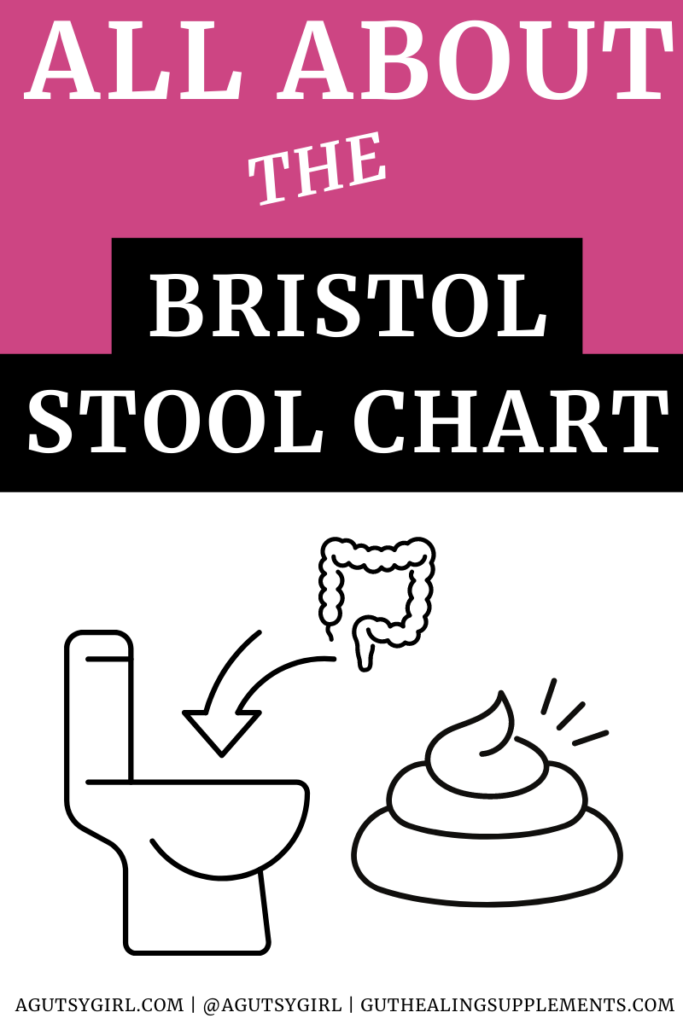
Dr. Ken Heaton, MD from The University of Bristol created The Bristol Stool Chart in 1997, through a study where they measured the transit time of their food from entrance to exit with radiopaque pellets, and had them keep a diary of their stool using this scale.
Upon completion of the trial, the Bristol Stool Chart was born as a universal way to track transit time.
The chart was created to help patients describe their stool consistency and shape, facilitating better communication between patients and healthcare providers.
It can be used to help identify gastrointestinal distress or food sensitivities even.
The Bristol Stool Scale is commonly used by healthcare professionals to assess bowel function, diagnose certain digestive disorders, and monitor treatment progress.
It can provide valuable insights into bowel habits and help identify abnormal stool patterns that may indicate underlying gastrointestinal issues.
This diagnostic medical tool was designed to classify the form of human faeces into seven categories.
So what are these seven types of stool exactly?
The seven types of stool are:
- Separate hard lumps, like nuts (hard to pass) – basically like rabbit droppings
- Sausage-shaped, but lumpy
- Like a sausage but with cracks on its surface
- Like a sausage or snake, smooth and soft
- Soft blobs with clear cut edges (easy to pass) – definitely more like loose stools
- Fluffy pieces with ragged edges, a mushy stool
- Watery stools, no solid pieces, entirely liquid
Type “4” is an ideal stool, and this is where we all want to be.
Types 1 – 3 are indicative of constipation; 5 – 7 is more on the diarrhea and/or malabsorption spectrum.
Snake Poop
Snake poop is a healthy stool; a good sign for optimal bowel health.
Lean in and listen up.
The Bristol Stool Chart Alternative Names
Alternative names for it that you may see floating (pun?!) around include:
- Bristol Stool Scale
- Poop Chart
- Meyers Scale
- Bristol Stool Form Scale
- BSF Scale
Why Use the Bristol Stool Chart?
For many people, using the Bristol Stool Chart is purely a research tool for personal needs.
Keeping track of where you’re at is good practice, no matter your situation.
But even though many use it sporadically and more for fun than anything else, it is a tool that doctor’s can also use as a medical aid when trying to figure out an underlying problem.
If your “type” has stayed consistently the same for any duration, it could indicate something more serious from a medical conditions standpoint (i.e. a Type 1 or a Type 7).
But you’ll notice I said duration vs. a single day. This is because, on any given day (or even for a full week), stool type can change a great deal due to these factors:
- Diet
- Stress
- Travel
- Dehydration
- Medications and side effects of them
- Age-related changes
- Activity levels and exercise
- Illness (such as gastroenteritis or “food poisoning”)
- Hormone-related changes such as during menstruation or pregnancy
- More serious conditions such as inflammatory bowel disease or colon cancer
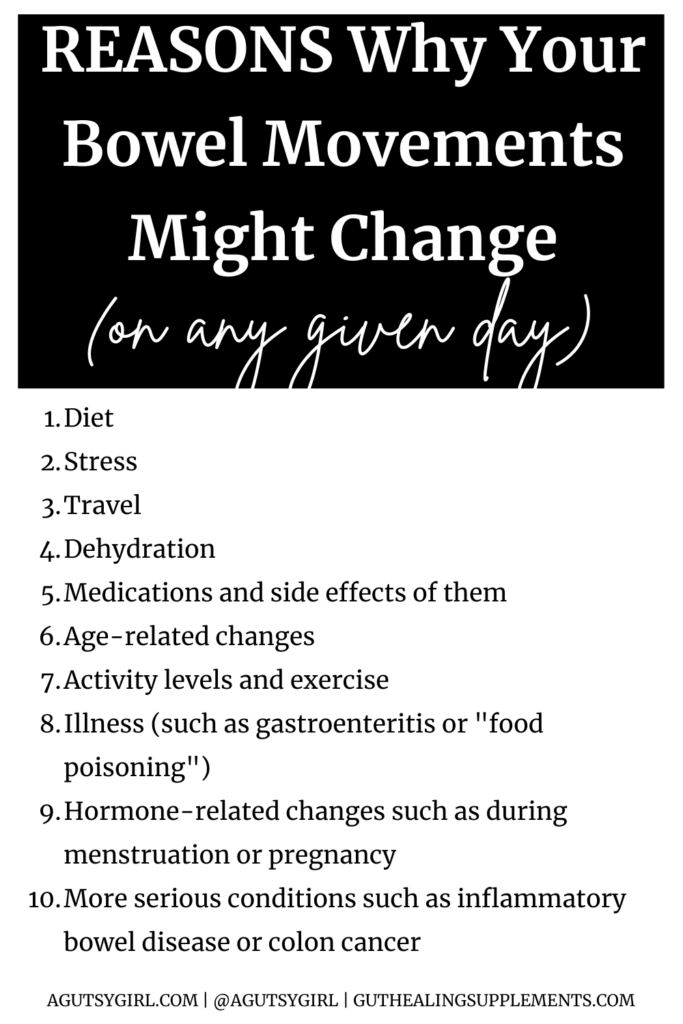
However, if due to any of those risk factors, a prolonged (negative) change in Bristol Stool Scale number appears, further investigation and professional medical advice must be taken into consideration.
A Type “4” stool consistency is where we want to be at or hovering around for most of the time.
Bristol Stool Chart Printable
The Bristol Stool Chart’s straightforward visual representation makes it easy for patients of all ages and educational backgrounds to use and understand.
If you’d like to have the perfect Bristol Stool Chart printable via a Bristol Stool Chart PDF, you’ll find it through my Etsy store HERE.
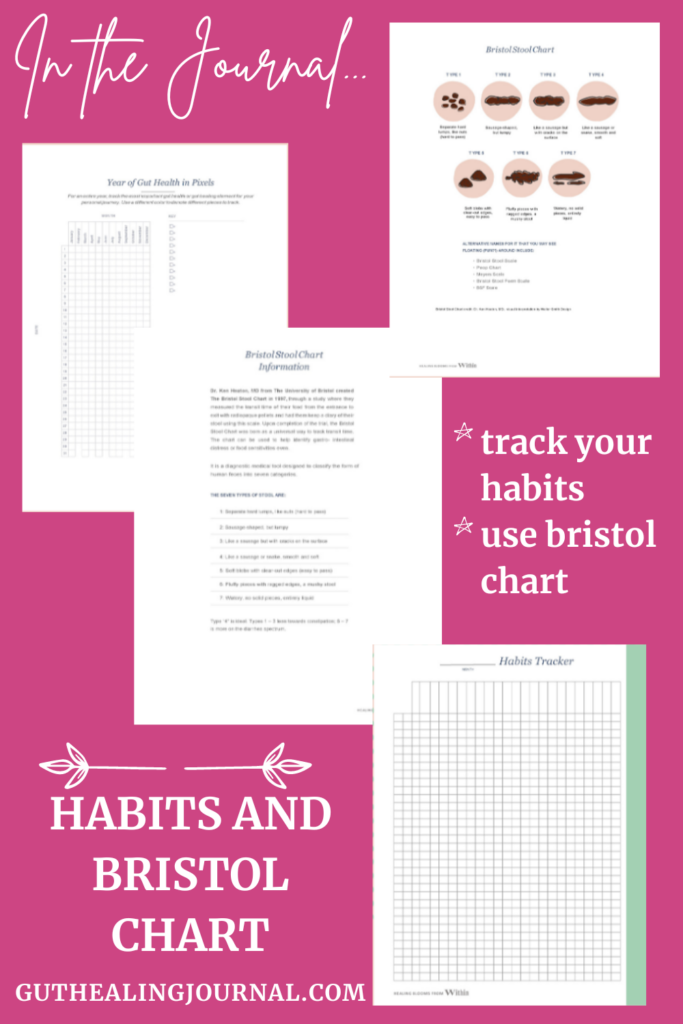
This page comes from the 90-day gut healing journal.
We created the Bristol Stool Chart Printable so that you could always have a little more pleasant view of the different types of stools for tracking purposes.
If you have a copy of the e-version journal or printed, you’ll have this sheet 24/7 at your hands all the time.
In order to understand if your type of stool is cause for concern or not, you should be tracking it. I
t’s not enough to just have this printable at your side. Instead, you should track it on a daily basis.
This is so that you can identify patterns and have a sound understanding of where you’re at today and what the next steps on your journey might involve.
Remember what I said in the video above; critical, could be life saving.
Bristol Stool Chart Versions
There are so many great visuals of the chart out there in addition to my rendition of the Bristol Stool Chart.
Here are some of my favorites (hover over each one to pin):


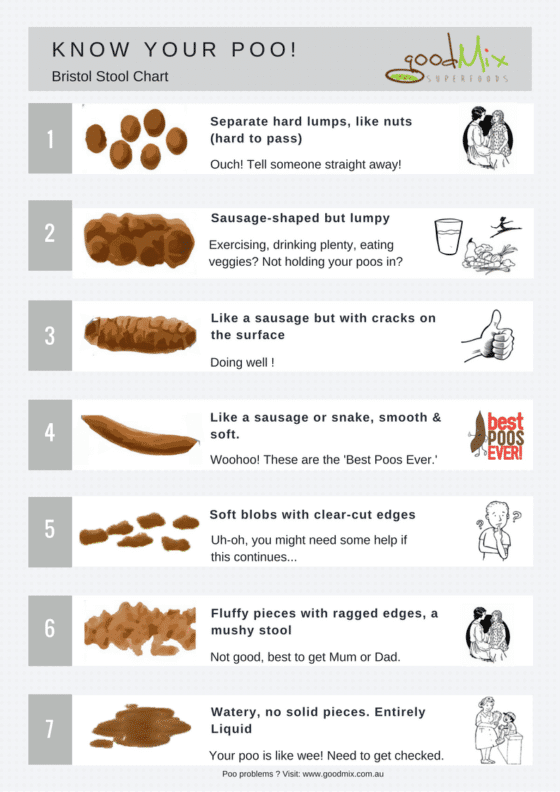
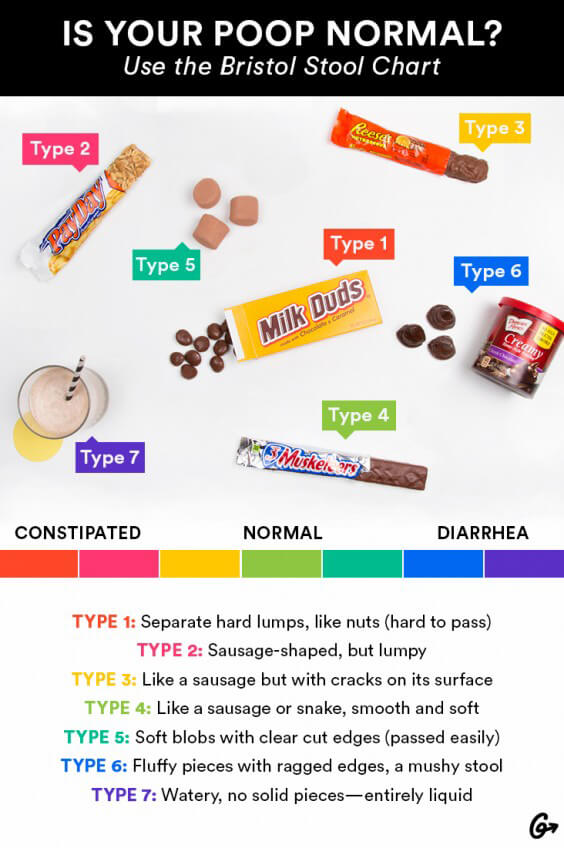

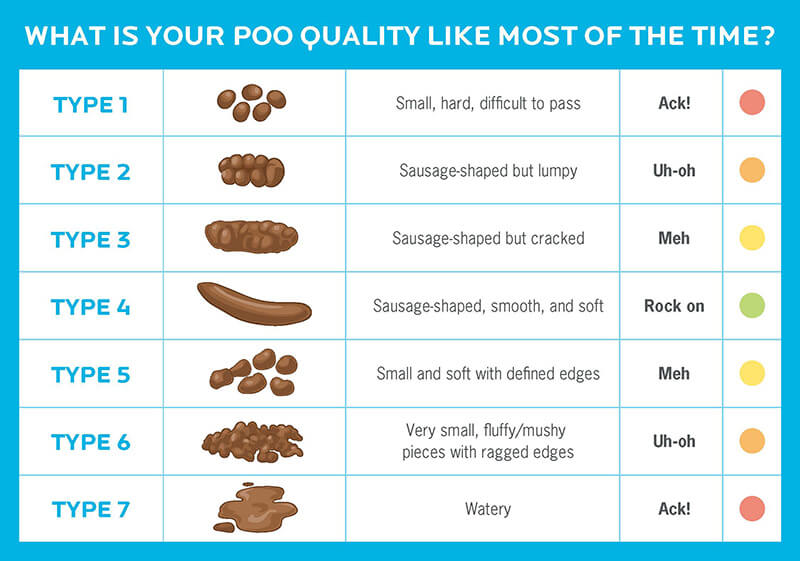
source + image credit + source + image credit + source + image credit + source + image credit + source + image credit + source + image credit + source + image credit
If you want to get really bold and brave, grab THIS. 🙂
Hey, like you don’t want to study normal stools with your morning cup ‘o Joe each day, right?!
Now, if you dare to share, leave your numbers below in the comments. No shame.
If you liked this post, you might also enjoy:
Xox,
SKH
🤰 bloating be gone! weight loss through optimal gut health for women
💃ʜᴇᴀʟ ʏᴏᴜʀ ɢᴜᴛ. ʜᴇᴀʟ ʏᴏᴜʀ ʟɪfe.
🫶🏻 founder gutbyome.com


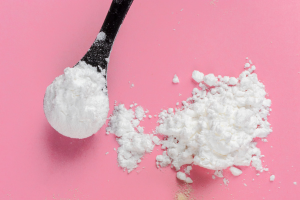




I stay in the range of 2 and 3 unfortunately. That is why I needed to focus on my gut health this year. I am tired of being miserable. I knew I needed to move more and drink more water but the funny thing was when I started exercising more the bowel movements increased and it was more painful than not going. My normal bowel movements are once or twice a week. Of course I will not be deterred and have started with my exercises and dealing with the cramping.
Hang in there. Now that you are focused on it, hopefully you’ll start to heal. Xox
Thank you so much for the out pouring support, education and caring you have put out here. I truly needed and appreciate it all! XOXO
Number 5 is my most common stool, but it looks more like a soft serve swirly pile (like in the “Your Poop and You Shape and Consistency” pictures from Healthline, rather than the little blobs seen in most of the other pictures). It has been like that for several months while being treated for SIBO. I also have celiac and Hashimoto’s thyroiditis. I don’t know how to get them to firm up a little more. I have occassional leakage, but that is getting better. It often makes a mess when I go to the bathroom, requiring lots of wiping and lots of toilet paper. No pain or bloating, just a little gas. My integrative medicine gastroenterologist MD does not seem to be helpful in this. Any suggestions? I’ve been on so many supplements and been trying so many different things. Thanks!
Hi! Does your MD seem to think it’s a problem? Just because you’re not at a “4” doesn’t mean there is something wrong necessarily. That said, bulk is usually added with fiber. How much do you eat?
My cats poop is a level 7 he is a kitten 4 months old. Can it be the food. I changed the food must I go back to the old food. Please let me know what you think